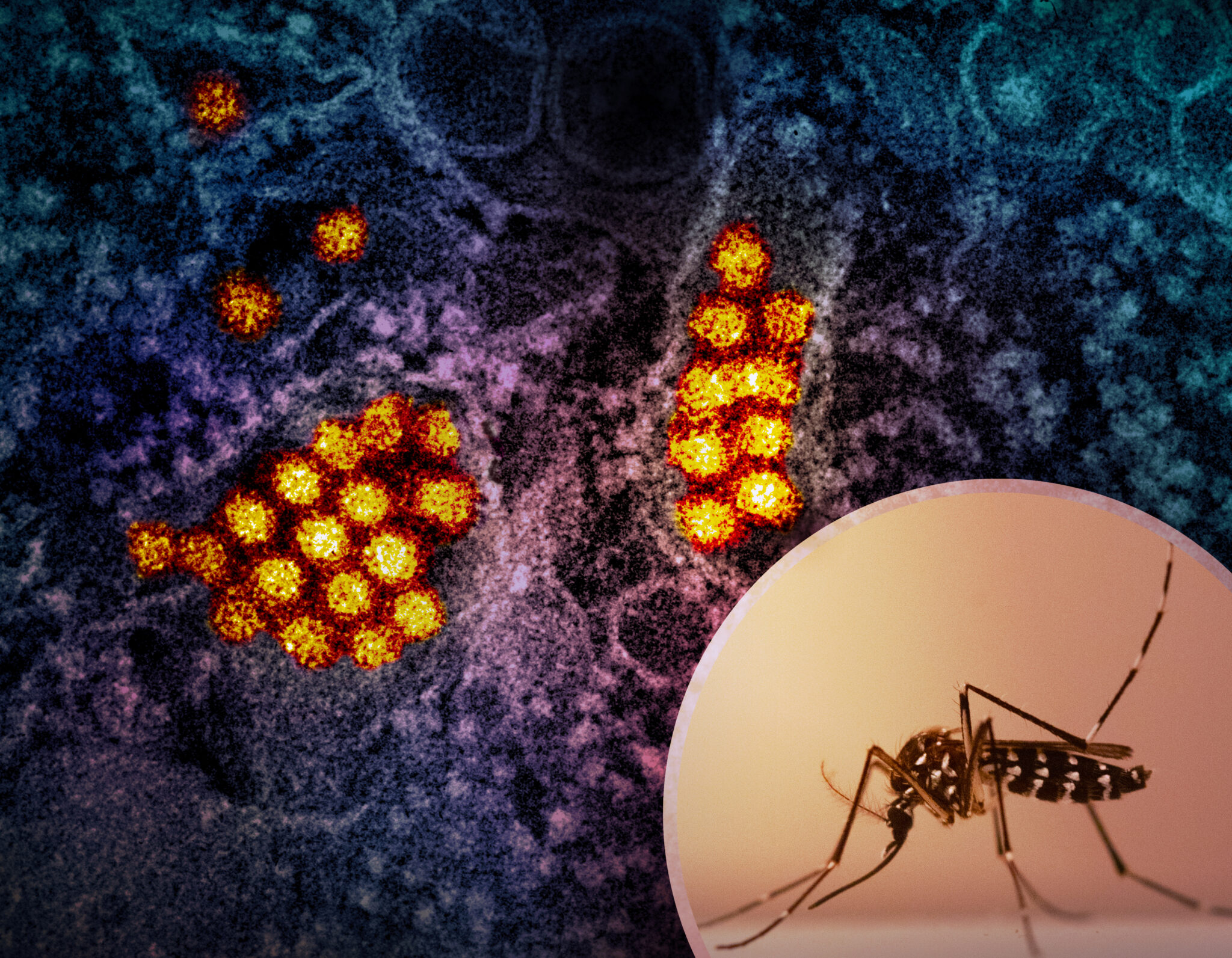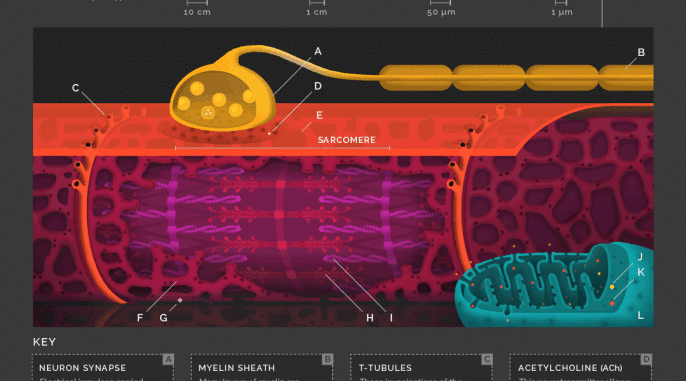Aedes mosquitoes use thermal infrared radiation (IR) along with a combination of other signals to detect their human targets.
By Vaishnavi Sridhar
The sound of buzzing mosquitoes may be enough to send shivers down your body. Especially so in tropical countries, where mosquitoes are synonymous with dreaded diseases. Certain species of female Anopheles mosquitoes spread malaria, and female Aedes aegypti mosquitoes are primary spreaders of viral diseases such as dengue, Zika, yellow fever, and chikungunya.
The primary target of these disease-spreading mosquitoes are humans. Female mosquitoes rely on blood feed to make eggs. To feed on human blood, mosquitoes first need to detect their target, land on them, and eventually feast on their blood. Mosquitoes feeding on infected humans take up disease-causing microbes from their blood and can transmit them to other healthy humans. This results in the spread of mosquito-borne diseases.
RELATED: Mosquito Saliva Protein Fights Dengue Transmission
A. aegypti mosquitoes combine multiple signals to detect their targets, increasing their chances of finding human targets. They might use other signals in combination with known signals, which might aid in the efficient detection of their targets. Identifying how these mosquitoes detect humans might help people design new strategies to control mosquito-borne diseases.
A recent study led by researchers from University of California, Santa Barbara found that female A. aegypti mosquitoes use thermal infrared radiation (IR) along with a combination of exhaled CO2 and human odor to detect humans at mid-range.
How do mosquitoes detect humans?
Mosquitoes use signals such as CO2 emanating from human breath, smell, and sight to find and detect humans at mid and long range. Exhaled CO2 from humans increases the responsiveness of mosquitoes to other signals. Aedes mosquitoes do not have sharp vision and rely on human odor to find humans. Mosquitoes can also use signals such as moisture and body heat. They detect heat via the terminal part of their antenna.
The possible ways in which mosquitoes could detect heat are by conduction, convection, and radiation. However, they would need to be in direct contact with humans to detect heat by conduction. Convective heat also requires close-range detection. Therefore, mosquitoes might detect the heat radiated by human targets (thermal IR, hereafter IR) at mid to long ranges in order to locate them.
RELATED: Human Scent May Help Manage Mosquitoes
New findings
Previous studies have shown that mosquitoes are not particularly attracted to IR. However, these studies observed IR in isolation and not in combination with other signals. To identify whether female mosquitoes are attracted to IR in combination with other signals, the researchers used a behavioral assay. For their experiments, the scientists primarily used female A. aegypti mosquitoes, which are known to respond to human odor and CO2 signals.
For the behavioral assay, the researchers put the mosquitoes into cages and exposed them to CO2, human odor, and IR. They provided human odor from a used lab glove and applied it to the cage mesh uniformly. Further, they provided CO2 through a tube. The scientists designed an arena with two temperature-controlled plates, one at 29.5°C (about 85.1°F, which is close to the ambient temperature of 29.2°C [84.6°F] for Aedes mosquitoes) and another set at 34°C (about 93.2°F, to mimic human skin temperatures), to provide IR. They lowered the cages with the mosquitoes into the arena, exposed them to varying combinations of these signals, and recorded their response for 5 minutes using videos.
A mosquito was considered to respond to their “host” if it were to land, walk, and extend its proboscis out of the cage. Mosquitoes exhibit these behaviors when trying to locate and find their human targets. The scientists found that the mosquitoes exhibited strong host-seeking behavior in the presence of a combination of human odor and CO2. This response was further amplified when IR was added. The researchers also found that mosquitoes preferentially detect and use IR as a signal when seeking human targets.
Additionally, the researchers found that the mosquitoes show a preference for IR only if the IR source is warmer than the environment. Despite the mosquitoes’ exposure to a range of temperatures that were way higher than the environment, they preferred IR source temperatures of 34°C, which is the temperature of human skin. Additionally, the mosquitoes were able to detect IR from mid-range distances and required the presence of CO2 for detection.
How do mosquitoes sense IR?
Previous studies have shown that the antennae of mosquitoes have nerve cells that are sensitive to warm temperatures. The researchers confirmed that the part of the antennae farthest from the head (distal part) is required to sense IR in the presence of CO2 and human odor.
Next, they speculated that the distal parts of the antenna contain sensors that sense IR. The most probable candidates were the proteins TRPA1, a known warm sensor in mosquitoes and fruit flies, and GR19, an Aedes counterpart of a thermosensor from fruit flies. The researchers mutated the genes associated with the proteins, and they exposed these trpA11 and Gr191 mutants to IR. They found that the mosquitoes with the mutated trpA11 genes were no longer attracted to IR.
The researchers found that TRPA1 is expressed in the distal part of the antennae. However, the activation of TRPA1 is the result of a cascade of events. These events start by the detection of heat by opsin proteins, which have been found to act as thermosensors in fruit flies. Opsin proteins in the mosquitoes could also exhibit similar roles. The scientists detected two opsin genes, GPROP1 and GPROP2, in the distal part of the antennae. Further, they found that mutating both opsin genes reduced attraction to IR but did not eliminate attraction. Since mutating trpA1 alone eliminates attraction to IR, the scientists inferred that both the opsins and TRPA1 proteins are required to detect low intensities of IR, and TRPA1 alone is sufficient to detect high intensities of IR.
Finally, the researchers tested whether the antennae of mosquitoes sent signals to the brain on detecting IR in trpA1 and opsin mutants. They found that these mutants showed no signal in response to IR. This indicates that TRPA1 and opsin proteins act as sensors that detect IR.
Moving forward
A common preventive measure for dengue includes wearing loose-fitting full-sleeved clothes. This helps by acting as a barrier to mosquito bites by blocking off the IR signal, which is used by the mosquitoes to detect their targets.
This study shows that Aedes mosquitoes use IR as a mid-range signal along with CO2 and human odor to detect human targets. This detection is mediated by the thermal sensor protein TRPA1 and opsin proteins GPROP1 and 2, which detect IR. These findings could help devise better mosquito traps and methods to prevent mosquito attraction to humans.
This study was published in the peer-reviewed journal Nature.
Reference
Chandel, A., DeBeaubien, N. A., Ganguly, A., Meyerhof, G. T., Krumholz, A. A., Liu, J., Salgado, V. L., & Montell, C. (2024). Thermal infrared directs host-seeking behaviour in Aedes aegypti mosquitoes. Nature, 633, 615–623. https://doi.org/10.1038/s41586-024-07848-5
Featured image: Aedes Mosquito and Dengue Virus Particles by NIAID. Photo by NIAID; micrograph courtesy of CDC; micrograph colorization and visual effects by NIAID. Licensed under CC by 2.0.

About the Author
Vaishnavi Sridhar completed a PhD in Cell and Developmental Biology from the University of British Columbia, Canada. Currently she works as Manager, Academic Collaborations and Events at the National Centre for Biological Sciences, Canada. She loves discussing science, taking nature walks, and cooking in her free time. Follow Vaishnavi on LinkedIn or X (formerly Twitter) @VaishnaviSrid10.




